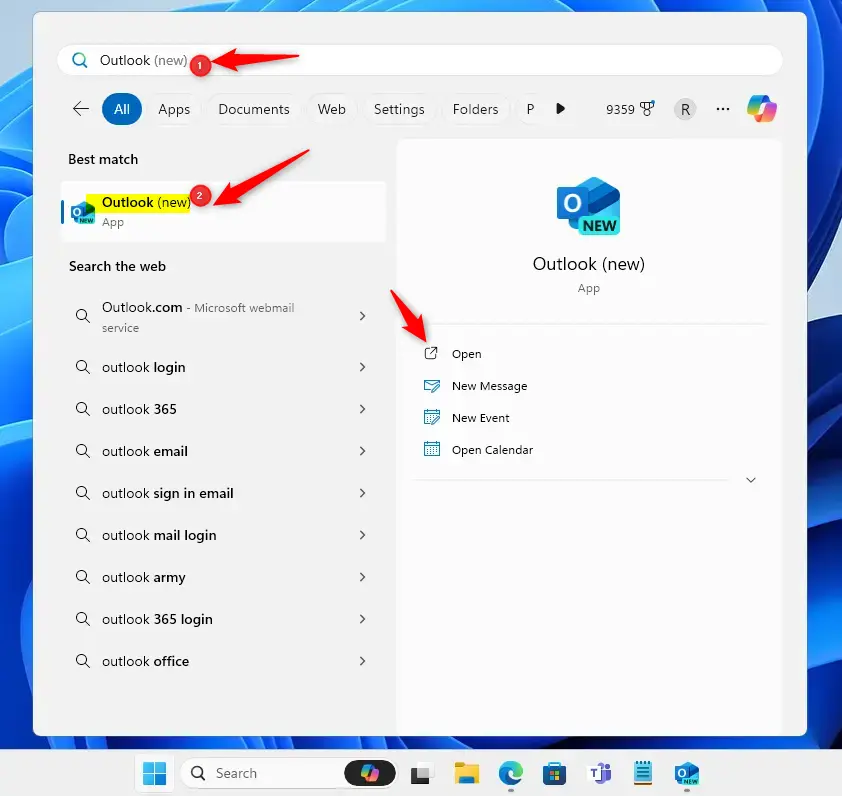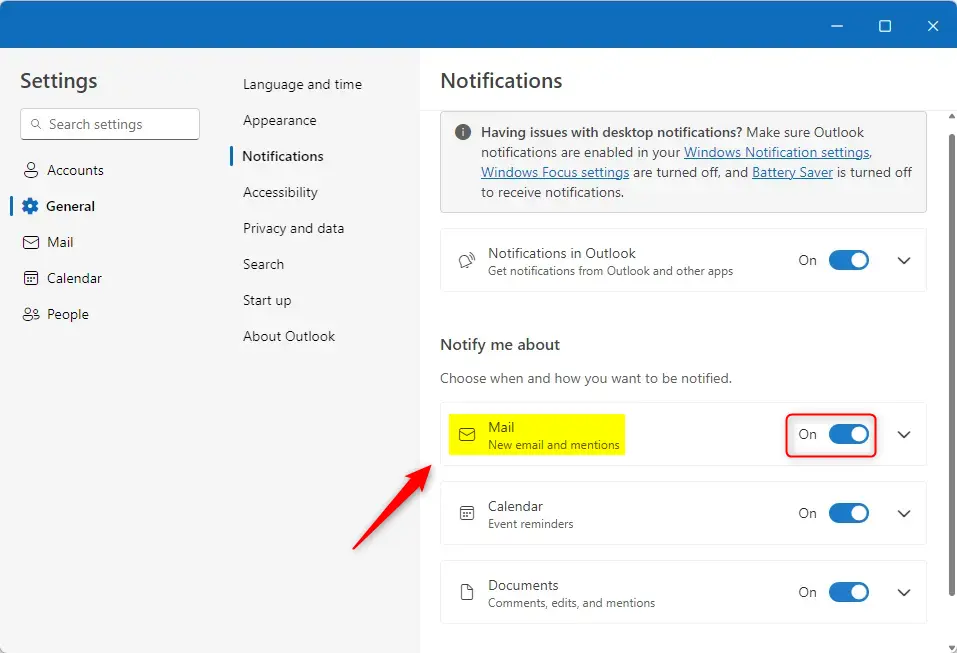This article explains how to turn on or off sound notifications for incoming emails in Outlook on Windows 11.
The new Outlook app in Windows 11 is a redesigned and updated version of the popular email and calendar management software. It has a modern user interface, and new features make it easier to stay on top of your emails and appointments.
The app has many features, including support for subscription management, email forwarding, setting default From address, backing up your mailbox, changing the reading pane, opening a new window for a message, language translations, turning text predictions on or off, switch primary account, sharing a calendar, changing language, date, and time format, public a calendar, show week numbers in Outlook calendar, deleting your search history, export your search history, add or remove events from emails to your Calendar, switch to dark mode, link preview, sound alerts for notifications, turn on or off notifications when Outlook is closed, alerts for emails and mentions, customize new email alerts, notifications from favorites only, and more.
When you turn notifications on in Outlook, it will play sound for all notifications, including mentions. You can turn notification sounds on/off.
Suppose you want notification sound turned on but not for emails. In that case, you can have notifications for calendars and others but turn them off for emails.
You might want to turn on sound notifications for incoming emails in Outlook on Windows 11 to get notified immediately when you receive a new email. This can help you stay on top of your work and avoid missing important emails.
On the other hand, you might want to turn off sound notifications if you find them distracting or receive many emails throughout the day. It’s all about personal preferences and what works best for you.
Turn on or off the sound for incoming emails in Outlook
As mentioned, you can enable Outlook sound for notifications but disable it for incoming emails.
Here’s how to do it.
First, open the Outlook app by clicking on its icon in the Start menu or searching for it in the taskbar search box.

Once Outlook is open, click on the Settings gear icon at the top right of the menu bar.

In the Settings sidebar, click General to open a sub-menu, then select Notification to open the settings.

Under the Notifications settings, look for the Notifications in Outlook section. You should now see a dropdown caret allowing you to enable or disable sounds for notifications.
(This assumes you have “Notification in Outlook” turned on.) If Notifications are not enabled, the settings below won’t have any effects.
If you are having issues with notifications, make sure Outlook notifications are enabled in your Windows Notification settings, Windows Focus settings are turned off, and Battery Saver is turned off to receive notifications.

Once Notification in Outlook is enabled, you can turn notifications for new emails and mentions on or off.
Select the “Mail” tile. Then, toggle the button switch to the Off position to disable notifications for new emails and mentions.
To enable notifications for new emails and mentions, toggle the switch button to the On position.

Ensure that Outlook and Mail notifications are enabled to receive incoming email notifications. Then, click the down-caret on the “Mail” tile.
Next, select the “Play sound” tile and toggle the switch button to the On position to enable it.
To disable it, toggle the button to the Off position.

Click the Save button when it appears to apply your changes.
You can exit the app when you’re done.
Conclusion:
- This article provided a comprehensive guide on enabling or disabling sound notifications for incoming emails in Outlook on Windows 11, ensuring users can customize their notification preferences.
- Following the outlined steps, users can easily manage notification sounds for emails and mentions, enhancing productivity and minimizing distractions.
- The instructions in this guide enable users to tailor their Outlook app to suit their specific needs, allowing for a personalized and efficient email management experience.
- Users are encouraged to use the comments section below for further assistance or to contribute to this guide.

Leave a Reply Cancel reply